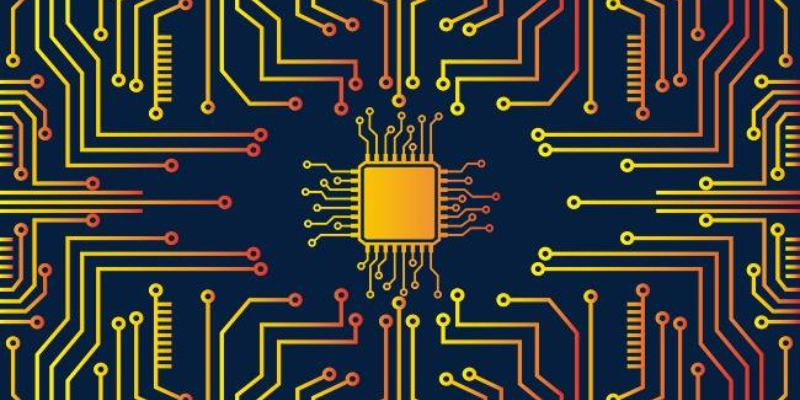Introduction
An IC decoder is an essential component in many digital logic circuits and applications. Decoders convert binary inputs into a set of outputs that activate corresponding control lines. When selecting an IC decoder, several factors should be evaluated to ensure the best fit for your specific design needs. This article will examine key considerations when selecting among the various IC decoder options available from 3 to 8 inputs.
Decoder Functionality
The core functionality of any decoder is to interpret binary input signals and convert them into a decimal output that activates the intended control lines. Decoders with 3 to 8 inputs provide a range of options for small to medium complexity logic circuits.
Key specifications to compare include:
- Number of inputs – 3 to 8 inputs allow recognition of up to 8 unique input combinations. More inputs provide greater flexibility.
- Number of outputs – The number of outputs equals 2^N, where N is the number of inputs. For example, a 3 to 8 decoder would have 8 to 256 outputs.
- Output type – Open collector, totem pole, or 3-state outputs. Look for sufficient current drive for your loads.
- Enable inputs – Many decoders have clocking or enable inputs to control operation.
Logic Family Compatibility
Decoder ICs are produced in a variety of logic families. Consider voltage levels, noise immunity, power consumption, and propagation delays.
Common logic families for decoders include:
- TTL (Transistor-Transistor Logic) -5V operation, fast.
- CMOS (Complementary Metal Oxide Semiconductor) – Low power, wide voltage operation.
- ECL (Emitter-Coupled Logic) – Fastest, niche use in high speed systems.
Select a decoder logic family compatible with your overall circuit design.
Package Types
Decoders come in through-hole DIP or surface mount packages. DIP packages have multiple pins in 0.1″ spacing for easy prototyping on breadboards or perfboards. SMD packages allow more compact PCB implementations.
Common package options include:
- DIP – Dual inline package with multiple pins on 0.1″ spacing.
- SOIC – Small outline IC, a small surface mount package.
- TSSOP – Thin shrink small outline package, smaller than SOIC.
Consider the PCB mounting requirements and automated assembly processes when choosing package types.
Other Considerations
Further aspects to evaluate when selecting an IC decoder:
- Operating temperature range – Industrial versus commercial temperature ranges.
- Propagation delays – Decoder response times, accounts for internal conversions.
- Power supply needs – Voltage ranges, current consumption.
- Noise immunity – Rejection of stray signals or power glitches.
Review decoder datasheets thoroughly to verify specifications match your application requirements.
Leading Decoder IC Options
Popular decoder ICs to consider from major manufacturers:
Texas Instruments
Nexperia
ON Semiconductor
- MC74HC238A – 3-to-8 Decoder/Demultiplexer
- MC14028B – BCD to Decimal Decoder
Conclusion
Choosing the right IC decoder involves evaluating key specifications like logic family, number of inputs/outputs, packaging, and voltage levels. Leading decoder options are available from major semiconductor manufacturers. Thoroughly review datasheets and select a decoder suitable for your exact application requirements. With the proper decoder in place, you can efficiently decode binary inputs to activate your circuit.
Frequently Asked Questions About IC Decoders
What are the main applications of IC decoders?
Decoders are commonly used for memory addressing and converting binary codes to control signals in processors, multiplexers, display drivers, and other digital logic systems. Decoders provide an efficient way to activate specific outputs based on binary input combinations.
What is the main difference between a decoder and encoder?
An encoder converts decimal or binary inputs into encoded outputs, while a decoder performs the reverse function of converting encoded inputs back into control outputs. Encoders compress multiple signals down to fewer output lines, decoders expand encoded inputs.
How do I determine the number of inputs needed for a decoder IC?
The number of unique input combinations needed determines the minimum decoder size. Calculate 2^N where N is number of inputs. For example, 8 inputs allows 256 combinations so a 3 to 8 decoder could be used. Go with the next larger size if combinations exceed a decoder’s range.
What is an enable input on a decoder and how is it used?
Many decoders have an enable/strobe input that must be activated to enable the decoding function. This allows decoders to be selectively activated, synchronized with clocks, or tristated when not in use. Proper use of the enable input is key to utilizing the decoder.
Can multiple decoders share the same inputs?
Yes, you can connect multiple decoders to the same input bus. Unique chip enable signals for each decoder allow the chip select to be decoded to selectively activate the desired decoder IC when its chip enable is triggered.
